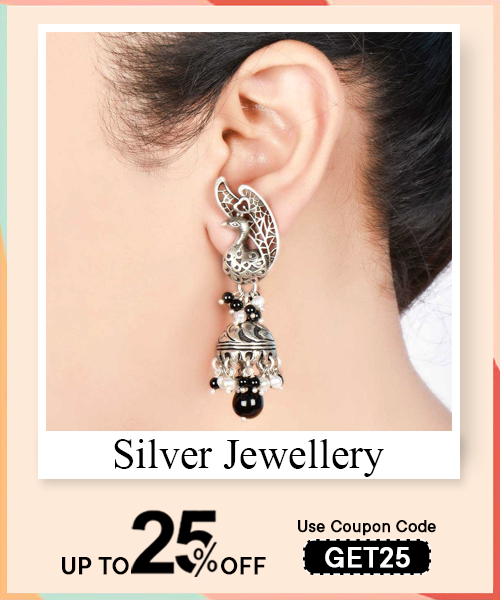Watercolor painting is a method of painting that uses water-soluble pigments. The paint is applied with a brush, and water creates various effects. This medium is known for its transparency, allowing light to shine through the layers of color. Artists often use watercolor on paper, making everything from detailed illustrations to loose, expressive landscapes. The fluidity of the paint allows for beautiful washes and gradients.
Table Of Contents- What is the History of Watercolor Painting?
- What are the Unique Characteristics of Watercolor Painting?
- What are the Different Types of Watercolor Painting?
- How Does Watercolor Painting Compare to other Painting Styles?
- What Themes or Subjects are Commonly Portrayed in Watercolor Painting?
- What Materials and Tools are Used in Watercolor Painting?
- How do Materials and Techniques Influence the Final Appearance of a Watercolor Painting?
- How can I develop my Style or Approach to Watercolor Painting?
- What Colors are Commonly Used in Watercolor Painting, and How do They Impact Mood and Atmosphere?
- What is the Significance of Composition, Perspective, and Balance in Watercolor Painting?
- Where did Watercolor Painting Originate?
- How has Watercolor Painting Evolved Across Different Cultures?
- Are there Regional Variations or Styles of Watercolor Painting?
- How has Globalization Influenced the Spread and Development of Watercolor Painting?
- Who are Some Renowned Watercolor Painters Throughout History, and What are Their Most Famous Works?
- How have These Painters Contributed to the Evolution of Watercolor Painting?
- Are There Contemporary Watercolor Painters Making Significant Contributions to the Field?
- How have Famous Watercolor Paintings Influenced Modern Art Movements?
- How is Watercolor Painting Viewed and Appreciated in Modern Society?
- How has Technology Impacted the Creation and Appreciation of Watercolor Painting?
- What is the Role of Watercolor Painting in Art Education and Cultural Preservation?
- How can Watercolor Paintings be Used in Home or Office Decoration?
- What Creative Ways can Watercolor Paintings be Displayed in Various Interior Design Themes?
- How can Watercolor Paintings be Integrated into Special Occasions or Festival Decorations?
- Are There Vastu or Feng Shui Guidelines for Placing Watercolor Paintings in the Home or Office?
- What Themes in Watercolor Painting are Believed to Enhance Positive Energy According to Vastu Principles?
- Is Watercolor Painting a Popular Choice for Gifting?
- What Occasions are Suitable for Gifting Watercolor Paintings?
- What Factors should be Considered When Selecting a Watercolor Painting as a Gift?
- Are There any Cultural or Symbolic Meanings Associated with Gifting Watercolor Paintings?
- How can I Determine the Resale Value of a Watercolor Painting?
- What Factors Influence the Resale Value of Watercolor Paintings?
- How can I Find Potential Buyers or Collectors Interested in Watercolor Paintings?
- What are the Best Platforms for Reselling Watercolor Paintings Online or Through Galleries?
- Are There any Legal Considerations When Reselling a Watercolor Painting?
- How can I Authenticate and Appraise a Watercolor Painting Before Reselling it?
- What are the Advantages and Risks Associated with Reselling Watercolor Paintings?
- How can I Prepare a Watercolor Painting for Resale?
- What should be Included in the Documentation When Reselling a Watercolor Painting?
- How should Watercolor Paintings be Appropriately Cleaned and Cared for?
- How do Environmental Factors Like Temperature, Humidity, and Sunlight Affect a Watercolor Painting?
- When should I Consider Professional Restoration for my Watercolor Painting?
- What are Some Standard Restoration Techniques, and How can I Find a Reputable Professional?
- What are the Ideal Storage Conditions for a Watercolor Painting to Prevent Damage?
- How can I Protect my Watercolor Painting from Pests, Mold, or Accidental Damage?
- Is it Advisable to Insure my Watercolor Painting, and What Should I Consider When Choosing Insurance?
- What Factors Influence Buyers’ Decisions When Choosing a Watercolor Painting?
- Are Watercolor Paintings Considered Suitable Investments, and What Influences Their Value?
- What is the Typical Buying Process for a Watercolor Painting Online and in Galleries?
- How can Buyers Research and Find Watercolor Paintings?
- Are There any Specific Themes or Styles of Watercolor Painting that are Particularly Popular Among Buyers?
- What Should Buyers Consider When Commissioning a Watercolor Painting?
- How can Buyers Ensure a Safe and Secure Online Purchasing Experience?
- What Career Opportunities are Available for Artists Specializing in Watercolor Painting?
- How can I Build a Successful Career as a Watercolor Painter?
- What are the Challenges and Rewards of Working as a Watercolor Painter?
- How can Watercolor Painters use Digital Platforms and Social Media to Reach Wider Audiences?
- How can a Watercolor Painter Create a Strong Portfolio or Brand Identity?
- How can Watercolor Paintings be Incorporated into Theme-Based Home or Office Designs?
- How can I use Watercolor Paintings to Enhance Living Rooms, Entryways, or Offices?
- What are Some Modern Trends in Watercolor Painting?
- How can I Customize a Watercolor Painting to Meet Personal or Buyer Preferences?
- What is the Process of Commissioning a Watercolor Painting?
- What are the Ethical Concerns Surrounding Preserving and Selling Historical Watercolor Paintings?
- What is the Significance of Watercolor Painting in Festivals, Rituals, or Other Cultural Celebrations?
The history of watercolor painting dates back to ancient times, with early examples found in cave paintings. However, it gained popularity in Europe during the Renaissance. Artists like Albrecht Durer used it for detailed studies and landscapes. In the 18th century, watercolor became a respected medium, with artists like J.M.W. Turner showcasing its beauty. The development of portable paint sets in the 19th century made it accessible for outdoor painting. Today, watercolor painting is celebrated in its own right, with many contemporary artists pushing its boundaries.

The unique characteristics of watercolor painting include its transparency and fluidity. Watercolor allows for delicate washes, layering, and blending of colors, creating a sense of light and depth. The paint dries fast so artists can use spontaneous and expressive techniques. Unlike other paints, it's hard to fix mistakes, encouraging artists to embrace its unpredictability. Also, the type of paper used can significantly affect the paint's appearance.
The different types of watercolor painting include traditional, wet-on-wet, and wet-on-dry techniques. In conventional watercolor painting, artists apply pigment to dry paper to create sharp edges. On the other hand, the wet-on-wet technique involves applying wet paint onto wet paper, resulting in soft, blended edges. The wet-on-dry method combines the two, allowing detailed work over a damp background. Additionally, watercolor washes cover large areas with a uniform color, while mixed media combines watercolor with other materials like ink or collage to achieve varied effects.
Watercolor painting differs from other styles, such as oil or acrylic, mainly in its transparency and application. Watercolors are different from oils. They are more fluid and luminous, allowing for layering of colors. Acrylics, on the other hand, dry quickly and can be used opaquely or transparently, but they lack the unique transparency of watercolors. Watercolor's reliance on water makes it more delicate and challenging to control, often resulting in a spontaneous, organic feel that contrasts with the precision of other mediums.
Common themes in watercolor painting include landscapes, nature, still lifes, and portraits. Landscapes often feature soft skies, flowing water, and vibrant flora, highlighting the medium's ability to capture light. Nature scenes, such as flowers and wildlife, showcase the delicate details achievable with watercolor. Still lifes involving inanimate objects allow for the exploration of color and composition. Portraits in watercolor focus on capturing the subject's essence, often employing soft washes for skin tones and expressive backgrounds to evoke emotion.
The materials and tools used in watercolor painting include paints, brushes, paper, and palettes. Watercolor paints come in tubes or pans and are made with pigments and a binder. Brushes are typically soft, made from natural or synthetic hairs, and come in various shapes and sizes for different effects. Watercolor paper is specially designed to handle water without warping; it comes in different weights and textures. A palette is used to mix colors, and additional tools like masking tape, sponges, and sprays can also enhance the painting process
Read More : A Complete Guide to Landscape Painting: Techniques, Styles, and Tips
Materials and techniques significantly influence the final appearance of a watercolor painting. The choice of paper affects how paint is absorbed, and colors interact; rough paper creates texture, while smooth paper offers precision. Different brushes can create varied marks, from fine details to broad washes. The technique used—like wet-on-wet versus wet-on-dry—determines the softness or sharpness of edges. Additionally, the quality of paints can impact vibrancy and transparency, ultimately shaping the mood and depth of the finished artwork.
To develop your style in watercolor painting, start by experimenting with different techniques and subjects. Try wet-on-wet, wet-on-dry, and glazing to see what resonates with you. Explore various themes, from landscapes to abstract pieces, to discover what inspires you most. Observe the work of other artists and identify elements you admire, then adapt those ideas into your practice. Regular practice is essential; the more you paint, the more you refine your preferences. Keep a sketchbook for ideas and notes to track your artistic journey.
Standard colors in watercolor painting include blues, greens, yellows, and earth tones, which evoke various moods. Blues and greens often create calm and serenity, making them famous for landscapes and skies. Bright colors like red and yellow can show energy and warmth, which is excellent for lively subjects. Adding opposite colors makes the picture more interesting by adding contrast, drama, and depth. Artists often mix colors to create new ones, changing the artwork's feelings. Picking the right colors is very important for showing feelings and ideas.
Read More: Explore About Glass Painting
Composition, perspective, and balance are crucial in watercolor painting as they guide the viewer's eye and create harmony. Composition involves arranging elements within the artwork, using techniques like the rule of thirds to create interest. Perspective gives depth, helping to depict three-dimensional space on a two-dimensional surface, making scenes more realistic. Balance ensures that visual weight is distributed evenly across the painting, whether symmetrical or asymmetrical. Together, these elements enhance storytelling, draw attention to focal points, and create an engaging visual experience for the audience.
Watercolor painting has origins that trace back to ancient cultures, including Egypt and China, where artists used water-based pigments for decorative purposes. However, it gained significant prominence in Europe during the Renaissance. Artists like Albrecht Dürer used watercolors for detailed studies and landscapes. The medium became more refined in the 18th century, particularly in England, where it was embraced by artists such as J.M.W. Turner and John Constable. Today, watercolor painting is recognized worldwide, evolving into a distinct form of artistic expression appreciated in various cultures.

Watercolor painting has evolved significantly, adapting to different cultures and artistic movements. In the East, traditional Chinese watercolor techniques focused on ink and wash. Watercolor became popular in Europe for landscape and botanical studies during the Renaissance and later the Romantic period, focusing on brush control and simplicity, reflecting evolving artistic styles. In the 19th century, plein-air painting, where artists worked outdoors, gained prominence. Today, contemporary watercolor encompasses various styles, techniques, and subjects, drawing from traditional practices and modern artistic trends, making it a versatile and ever-changing medium.
Yes, there are several regional variations and styles of watercolor painting. In Europe, styles vary from the detailed realism of British watercolorists to the loose, expressive techniques of French artists. Asian watercolor, mainly Chinese and Japanese, often emphasizes simplicity, fluid brushwork, and the use of ink and color harmoniously. Artists blend traditional methods with contemporary influences in the Americas, leading to unique styles that reflect local landscapes and cultures. Additionally, Indigenous artists incorporate their cultural narratives and symbols into their watercolors, adding to this medium's rich tapestry of regional variations.
Globalization has significantly influenced the spread and development of watercolor painting by facilitating the exchange of ideas, techniques, and materials across cultures. Artists now have access to a broader range of styles and methods worldwide, inspiring innovation and collaboration. Online platforms and social media allow artists to share their work and connect with global audiences, leading to the blending of traditional and contemporary practices. Workshops and art fairs further promote cross-cultural exchanges, enriching the medium. As a result, watercolor painting continues to evolve, reflecting a diverse range of influences and artistic expressions.
Renowned watercolor painters throughout history include J.M.W. Turner, known for his dramatic landscapes like "The Fighting Temeraire," and John Constable, famous for "The Hay Wain." Other notable artists include Albrecht Dürer, whose detailed studies showcased the medium's precision, and Winslow Homer, who was recognized for his vibrant seascapes. In the 20th century, Andrew Wyeth's "Christina's World" captured emotional depth. Each artist has left a lasting legacy in watercolor painting, demonstrating its potential for realism and expression.
These painters have significantly contributed to the evolution of watercolor painting by pushing its boundaries and expanding its recognition as a legitimate art form. J.M.W. Turner elevated watercolor to an expressive medium, exploring light and atmosphere. John Constable demonstrated the beauty of capturing nature's nuances, while Albrecht Dürer's meticulous techniques laid the groundwork for detail-oriented approaches. Winslow Homer and Andrew Wyeth brought emotional depth and narrative elements into the medium. Their innovations inspired future generations to explore watercolor's versatility, establishing it as a respected and dynamic artistic expression.
Yes, many contemporary watercolor painters are making significant contributions to the field. Artists like Rachael T. Smith focus on vibrant, colorful landscapes and urban scenes, while Karlyn Holman explores mixed media approaches, blending watercolor with other materials. Another notable artist is Anna Mason, known for her detailed botanical paintings that showcase realism and vibrancy. These artists, among others, are experimenting with new techniques, pushing traditional boundaries, and engaging with modern themes, thus revitalizing the medium and inspiring new artists and audiences.
Famous watercolor paintings have influenced modern art movements by showcasing the medium's potential for expression and innovation. The Impressionists, for instance, were inspired by the fluidity and lightness of watercolor, incorporating similar techniques into their oil paintings. The spontaneity of watercolor also paved the way for Abstract Expressionism, encouraging artists to embrace freedom and emotion in their work. Moreover, contemporary movements like Urban Sketching and plein-air painting draw on traditional watercolor practices, promoting a renewed appreciation for this medium. These influences highlight watercolor's ongoing relevance in the evolving landscape of modern art.
Watercolor painting is widely appreciated in modern society for its unique qualities, such as transparency and fluidity. Many view it as an expressive medium that captures light and emotion in ways other forms cannot. Art enthusiasts and collectors celebrate watercolor for its versatility, with contemporary artists pushing boundaries and exploring new themes. Workshops and online courses have made watercolor accessible to a broader audience, fostering a community of hobbyists and professionals. Exhibitions and competitions further promote its appreciation, showcasing the talent and innovation within the watercolor painting community.
Technology has significantly impacted the creation and appreciation of watercolor painting. Digital tools allow artists to experiment with color and composition before committing to physical materials. Software programs can simulate watercolor effects, giving artists new avenues for exploration. Social media platforms enable artists to share their work with a global audience, gaining recognition and feedback. Online tutorials and courses have made learning watercolor techniques more accessible, attracting new enthusiasts. Additionally, digital galleries and virtual exhibitions broaden the reach of watercolor art, helping to cultivate an appreciation for the medium in diverse communities.
Watercolor painting plays a crucial role in art education by teaching fundamental skills such as color mixing, brush techniques, and composition. It fosters creativity and encourages experimentation, making it an ideal medium for beginners. Watercolor captures landscapes, traditions, and stories in cultural preservation, documenting moments in time. Artists often use watercolor to reflect their cultural heritage, creating works celebrating local history and identity. Art programs in schools and communities usually incorporate watercolor to connect students with their cultural roots, ensuring the continuity of artistic practices and traditions across generations.
Watercolor paintings can enhance home or office decoration by adding color, warmth, and personality to spaces. They can serve as focal points in rooms, drawing the eye and creating conversation starters. In homes, landscapes or abstract pieces can create a calming atmosphere, while vibrant florals can add energy to a space. In offices, professional yet creative watercolor art can inspire productivity and creativity. Choosing pieces that complement the existing decor and color scheme ensures a cohesive look, making watercolor paintings a versatile choice for any environment.
In modern interiors, watercolor paintings can be framed in sleek, simple frames or even displayed as oversized pieces for a bold statement. In traditional settings, ornate frames and groupings of more miniature paintings create an elegant gallery wall. For minimalist designs, select one or two large, impactful pieces with ample negative space to maintain a clean aesthetic. Mixing watercolor with other mediums, such as photography or mixed media, can add interest. Floating frames show the paper’s texture, enhancing the artwork’s visual appeal across various design themes.
Watercolor paintings can be integrated into special occasions or festival decorations as centerpieces, backdrops, or themed art displays. Soft floral watercolors can adorn tables and wedding invitations, creating a cohesive look. During holidays, seasonal watercolors depicting festive scenes can enhance the atmosphere. They can also be incorporated into handmade greeting cards or gift wraps for personal touches. Additionally, artists can create site-specific installations that reflect the event's theme, using watercolor's fluidity to evoke the mood of the occasion and uniquely engage guests.
Vastu and Feng Shui guidelines are included for placing watercolor paintings in homes and offices. In Vastu, displaying art promoting positivity and tranquility is recommended. Paintings depicting natural landscapes, water scenes, or harmonious themes are encouraged and should ideally be placed in the east or north direction for good energy flow. In Feng Shui, art should resonate with the space's energy; water-themed paintings can enhance wealth and abundance if positioned in the southeast corner. Avoid images of violence or chaos, as they can disrupt the peace and harmony of the environment.
According to Vastu principles, watercolor themes that enhance positive energy include nature, water, and harmonious scenes. Landscapes featuring greenery, mountains, or serene water bodies promote tranquility and prosperity. Floral paintings symbolize growth and beauty, while gentle abstracts can foster creativity and calm. Imagery depicting the sunrise or open skies invites positivity and hope into a space. In Vastu, the themes must resonate with the occupants' intentions, creating an environment that supports well-being, happiness, and balance in life.
Watercolor painting is a popular gift choice because of its versatility and emotional appeal. Many people love watercolors' softness and vibrancy, making them suitable for various tastes and decor styles. Whether an original watercolor piece or a high-quality print, it can be a meaningful gift showing thoughtfulness and care. Personalized watercolor art, such as custom portraits or landscapes, adds a unique touch, making it a cherished present. The medium's ability to evoke emotion and capture beauty makes watercolor paintings a thoughtful choice for special occasions.
Watercolor paintings suit various occasions, including weddings, birthdays, anniversaries, housewarming parties, and holidays. They make excellent gifts for milestones such as graduations or retirement, offering a lasting memento of the occasion. For baby showers, gentle, colorful pieces can brighten a nursery. Watercolor art can be a thoughtful gift for art lovers, providing inspiration and beauty in their space. Personalized commissions for specific events or themes enhance their suitability as gifts, making them memorable and meaningful for the recipient.
When selecting a watercolor painting as a gift, consider the recipient’s personal taste, style, and existing decor. Consider color schemes; choosing colors complementing their space can enhance the artwork's impact. The theme is also essential; landscapes, florals, or abstract pieces evoke different emotions. Additionally, consider the size of the painting and the recipient’s available wall space. If possible, a personalized or custom piece can add sentimental value. Lastly, ensure the artwork is of good quality, using proper materials that will stand the test of time.
Yes, there are cultural and symbolic meanings associated with gifting watercolor paintings. In many cultures, art represents goodwill, creativity, and prosperity. Watercolor paintings featuring nature, such as flowers or landscapes, symbolize beauty and tranquility, making them ideal gifts for fostering harmony in relationships. In some traditions, gifting art can be seen as a blessing, promoting positive energy and creativity in the recipient’s life. Additionally, personalized or themed artworks can carry specific meanings based on the occasion or the recipient’s life journey, enhancing the gift's emotional significance.
To determine the resale value of a watercolor painting, start by researching recent sales of similar works by the same artist or within the same style. Check auction results, gallery prices, and online art marketplaces for comparable pieces. Factors such as the artist's reputation, the painting's size, and its medium also play a role in valuation. Consulting with art appraisers or professionals can provide a more accurate assessment, as they have expertise in market trends and can consider the artwork's unique characteristics.
Factors influencing the resale value of watercolor paintings include the artist's reputation, condition, and provenance. A well-known artist can significantly increase value, while lesser-known artists may not command high prices. The condition of the painting is crucial; any damage or fading can lower its worth. Provenance, or the history of ownership, adds credibility and can enhance value. Other considerations include market demand, the painting's size, and the uniqueness of the subject matter or technique used in the artwork.
Network within art communities and attend gallery openings or art fairs to find potential buyers or collectors interested in watercolor paintings. Online platforms and social media can help connect with art enthusiasts and collectors. Join art groups or forums to share your work and engage with interested parties. Listing paintings on dedicated art sales websites or local classifieds can attract buyers. Building relationships with galleries or art consultants can lead to opportunities for selling your work to their clients.
The best online platforms for reselling watercolor paintings include dedicated art marketplaces such as Saatchi Art, Artsy, and Etsy, catering to artists and collectors. Social media platforms like Instagram and Facebook can also effectively reach a broad audience. Local galleries may offer consignment options or host exhibitions, providing exposure to potential buyers. Additionally, online auction sites like eBay or specialized auction houses can be viable for reaching collectors interested in specific art styles.
Yes, there are legal considerations when reselling a watercolor painting. Depending on local regulations, it’s essential to be aware of taxes that may apply to the sale. Ensuring proper authentication of the artwork is crucial to avoid disputes over its origin and value. Copyright issues may arise if the artwork is reproduced or displayed commercially without permission from the artist or copyright holder. Familiarizing yourself with these aspects helps ensure a smooth and legally compliant transaction.
To authenticate a watercolor painting, seek the expertise of a qualified appraiser or art expert who can verify the artist's signature, style, and provenance. Documentation such as certificates of authenticity can also be helpful. Consider recent sales of similar works and obtain a formal report outlining the painting's market value for appraisal. This professional assessment gives potential buyers confidence in the artwork's legitimacy and value, facilitating a successful resale.
The advantages of reselling watercolor paintings include the potential for profit, the ability to connect with other art lovers, and the satisfaction of sharing art with others. Successful sales can enhance your reputation as a seller and provide opportunities for future sales. However, risks include fluctuating market values, difficulty finding buyers, and the chance of incurring losses if the painting does not sell for the anticipated price. Additionally, legal and logistical challenges can arise during the resale process.
To prepare a watercolor painting for resale, clean the artwork gently to remove dust and dirt. If necessary, consult a professional conservator for any restoration work to ensure the painting is in excellent condition. Proper framing enhances presentation and protects the artwork, making it more appealing to potential buyers. Additionally, consider documenting the painting's condition and any restoration work performed, as this information can be valuable to buyers and contribute to the painting's overall appeal.
When reselling a watercolor painting, include documentation such as provenance records detailing the painting's ownership history. A condition report outlining any wear, restoration, or damage is essential for transparency. Certificates of authenticity and appraisal reports can help validate the painting's value and legitimacy. Any additional information about the artist, exhibition history, or relevant background details adds value and can enhance buyer confidence, making the transaction smoother and more trustworthy.
Watercolor paintings should be handled with care to avoid damage. To clean them, gently use a soft, dry brush or a microfiber cloth to remove dust. Avoid directly using water or cleaning solutions on the painting, as moisture can warp the paper or alter colors—store artwork flat or hung securely, avoiding direct contact with surfaces that could scratch or stain. When framing, use UV-protective glass to shield the painting from light damage. Regularly check for signs of mold or pests and maintain a stable environment to preserve the artwork.
Environmental factors significantly affect watercolor paintings. High humidity can cause paper to warp or mold, while very low humidity may lead to cracking. Temperature fluctuations can cause the paper to expand and contract, risking damage to the artwork. Sunlight exposure can fade colors and deteriorate the paper over time. Watercolor paintings should be displayed in a climate-controlled environment, away from direct sunlight, heat sources, and areas with high moisture to maintain their integrity and longevity.
Consider professional restoration for your watercolor painting if you notice significant damage, such as tears, water stains, fading, or mold. If the artwork has been improperly stored or displayed, leading to deterioration, seeking a conservator's expertise is wise. Restoration may also be warranted if the painting has sentimental or monetary value and needs to be preserved for future enjoyment. A professional can assess the damage and recommend appropriate restoration techniques to restore the painting's appearance and stability.
Standard restoration techniques for watercolor paintings include cleaning, repairing tears, and re-attaching flaking paint. Conservators may also use specialized materials to stabilize the artwork or improve its appearance. For a reputable professional, seek recommendations from art galleries, museums, or local art organizations. Look for accredited conservators accredited by recognized associations, such as the American Institute for Conservation. Reviewing their portfolios and client testimonials can also ensure you select a qualified expert for your restoration needs.
The ideal storage conditions for a watercolor painting include a calm, dry environment with stable temperatures and humidity levels. Store the painting flat in a protective sleeve or portfolio to prevent bending or creasing. If rolled, use acid-free materials and avoid tight rolls to minimize stress on the paper. Keep artworks from direct sunlight and prevent basements or attics where temperature and humidity fluctuate. Regularly check the stored paintings for signs of mold or pests to ensure long-term preservation.
To protect your watercolor painting from pests, mold, or accidental damage, ensure it is stored or displayed in a clean, dry environment. Use pest deterrents like cedar blocks or essential oils in storage areas. Ensure proper ventilation to prevent mold growth, particularly in humid conditions. When displaying, use UV-protective glass in frames to shield against sunlight. Handle the painting with clean, dry hands, or wear gloves to prevent oils from your skin from causing damage. Regular inspections can help identify potential issues before they escalate.
It is advisable to insure your watercolor painting, especially if it holds significant monetary or sentimental value. When choosing insurance, consider the painting's appraisal value based on recent sales of similar works. Ensure the policy covers various risks, including theft, damage, and loss during transport. Look for insurance providers specializing in fine art, as they understand the unique considerations involved. Reviewing the terms and conditions of the policy, including deductibles and coverage limits, is essential to ensure adequate protection.
Buyers’ decisions when choosing a watercolor painting are influenced by several factors, including personal taste, emotional connection to the artwork, and the artist’s reputation. The color scheme and theme should align with the buyer’s decor and preferences. Additionally, the painting's size and framing options can affect its appeal. Provenance, or the painting’s history and authenticity, also plays a significant role. Price is crucial; buyers often seek works that offer good value relative to their budget. Finally, recommendations from friends, art advisors, or online reviews can sway decisions.
Watercolor paintings can be considered suitable investments, though their value is influenced by factors such as the artist's reputation, rarity, and market demand. Works by established artists appreciate over time, while emerging artists may offer opportunities for significant value growth. The condition of the painting, its provenance, and current trends in the art market also affect investment potential. Buyers should consider the artist's historical performance and the overall popularity of watercolor as a medium when assessing investment potential.
The typical buying process for a watercolor painting begins with research, where buyers explore galleries, online marketplaces, or artist websites. In galleries, buyers can view works in person and ask questions about the pieces. Online, they can browse listings, compare prices, and read descriptions. Buyers may negotiate the price once a painting is selected, especially in galleries. Payment methods vary; online transactions often involve credit cards or payment platforms. After purchase, buyers should receive documentation of authenticity and arrangements for delivery or pickup are made to finalize the transaction.
Buyers can research and find watercolor paintings through various methods. Online art marketplaces like Saatchi Art, Artsy, and Etsy offer extensive selections from different artists. Social media platforms, particularly Instagram, allow buyers to discover emerging artists and trends. Local galleries and art fairs let buyers view works in person and meet artists. Art blogs, magazines, and online forums can also offer insights into current market trends and notable artists. Joining local art groups or attending workshops can also enhance knowledge and connections in the art community.
Specific themes and styles of watercolor painting are prevalent among buyers. Landscapes, floral compositions, and abstract works often attract interest for their versatility and emotional appeal. Nature-inspired pieces that capture light and movement resonate well, while botanical illustrations are favored for their detail and beauty. Minimalist and contemporary styles are gaining traction, reflecting modern design trends. Seasonal or themed works related to holidays or events can also spark buyer interest. Ultimately, popular themes often align with current design aesthetics and personal preferences.
When commissioning a watercolor painting, buyers should consider the artist's style and experience, ensuring their vision aligns with the artist's capabilities. Clear communication about the desired subject, size, color palette, and intended use is essential. Establishing a timeline and budget upfront helps set realistic expectations. Buyers should also discuss the artist's process and any revisions allowed during creation. It’s advisable to review previous works or testimonials to gauge the artist’s reliability. Finally, a written agreement detailing the commission terms can protect both parties throughout the process.
To ensure a safe and secure online purchasing experience for watercolor paintings, buyers should start by researching reputable platforms and artists. Look for secure payment options, such as PayPal or credit cards, which offer buyer protection. Always check for a return policy and read customer reviews to gauge the seller's reliability. Verify the authenticity of the artwork through documentation provided by the seller. Use platforms specializing in art sales, as they often have protocols to protect buyers. Finally, trust your instincts; proceed cautiously if a deal seems too good
Artists specializing in watercolor painting can explore various career opportunities, including gallery representation, freelance commissions, and illustration work for books, magazines, or products. Many watercolor artists teach workshops or classes, sharing their skills with others. Some may focus on creating custom art for clients, such as portraits or landscapes. Additionally, artists can enter exhibitions, participate in art fairs, and sell their works online through marketplaces or personal websites. Opportunities also exist in art conservation, framing, and curating, allowing artists to engage with the broader art community.
Building a successful career as a watercolor painter involves several key steps. First, hone your skills through consistent practice and experimentation with techniques and styles. Create a strong portfolio showcasing your best work, including various subjects and themes. Networking is crucial; connect with other artists, gallery owners, and art enthusiasts through local events and online platforms. Consider participating in exhibitions and competitions to gain exposure. Utilize social media and online marketplaces to reach wider audiences and promote your work. Finally, stay informed about market trends and adapt your approach as needed.
Working as a watercolor painter comes with both challenges and rewards. One challenge is the competitive nature of the art market, where standing out can be difficult. Financial instability is also typical, especially for emerging artists, as income can be unpredictable. Creating art that resonates with buyers while staying true to one’s style can also be a balancing act. However, the rewards include the joy of self-expression and creativity, the satisfaction of sharing one’s work with others, and the potential for personal fulfillment and recognition in the art community.
Watercolor painters can use digital platforms and social media to reach wider audiences by regularly sharing their work and artistic process online. Creating an engaging presence on platforms like Instagram, Facebook, and Pinterest allows artists to showcase their paintings, connect with followers, and build a community. To attract interest, they can share time-lapse videos of their painting process, behind-the-scenes content, and tutorials. Joining art groups and participating in challenges or collaborations can enhance visibility. Additionally, setting up an online store or using marketplaces can help artists sell their work to a global audience.
To create a strong portfolio or brand identity, a watercolor painter should start by curating their best works, showcasing a cohesive style and theme. The portfolio should include high-quality images, detailed descriptions, and an artist statement that reflects their vision and artistic journey. Consistency in presentation, including color schemes and typography, helps establish a recognizable brand. Engaging with audiences through social media and maintaining a professional website reinforces this identity. Additionally, networking with other artists and participating in exhibitions can enhance visibility, while collecting testimonials and reviews adds credibility to the brand.
Watercolor paintings can be seamlessly incorporated into theme-based home or office designs by selecting pieces that align with the overall aesthetic. For coastal themes, choose seascapes with soft blues and greens; for a botanical theme, opt for floral or nature-inspired artworks. In modern designs, abstract watercolor pieces can add a contemporary touch, while traditional settings may benefit from classic landscapes. Arranging paintings in cohesive groupings or using complementary frames enhances the thematic approach. Additionally, incorporating colors from the paintings into furniture or decor can create a unified and inviting atmosphere.
To enhance specific spaces with watercolor paintings, consider the mood and function of each area. In living rooms, larger pieces or gallery walls can create focal points and spark conversation. For entryways, more miniature, welcoming artworks can set the tone for the home. In offices, calming landscapes or abstract pieces can promote focus and creativity. Choose colors that complement the existing decor; soft pastels can create a serene atmosphere, while vibrant pieces can energize a space. Proper lighting, such as spotlighting or natural light, can enhance the paintings' visual impact.
Modern trends in watercolor painting focus on minimalism, where artists create simple yet impactful compositions. Abstract watercolor works are gaining popularity for their expressive use of color and form. Additionally, there’s a growing interest in mixed media, combining watercolor with other materials like ink or collage elements. Illustrative styles that incorporate whimsical or playful themes are also trending. Using bold colors and experimental techniques, such as wet-on-wet blending or layering, reflects contemporary artistic exploration. Eco-friendly materials and practices are increasingly prioritized among modern watercolor artists.
Discuss specific preferences with the artist to customize a watercolor painting, including desired themes, colors, and sizes. Consider any elements you want to include, such as personal motifs or meaningful landscapes. Referral images or examples of styles you admire can help the artist understand your vision. Additionally, setting a budget and timeline ensures that both parties are aligned. Communication throughout the creative process allows for adjustments and feedback, creating a unique piece that meets personal or buyer preferences.
Commissioning a watercolor painting typically begins with an initial consultation between the buyer and the artist. During this discussion, the buyer outlines their vision, including themes, colors, size, and any specific elements they wish to incorporate. The artist may provide sketches or ideas based on this input. Once both parties agree on the details, a contract outlining the price, timeline, and payment terms is created. After the commission is finalized, the artist begins the painting, providing updates as necessary. Upon completion, the buyer receives the artwork, often accompanied by documentation of authenticity.
Ethical concerns surrounding preserving and selling historical watercolor paintings include provenance, authenticity, and cultural sensitivity. Ensuring that the artwork has a transparent ownership history is vital to avoid claims of theft or looting. Additionally, preserving the integrity of the artwork without compromising its historical value raises ethical questions, especially during restoration. The sale of culturally significant pieces requires sensitivity to the communities they represent, ensuring that artists or cultures are not exploited. Transparency in the sale process and respect for the artwork's heritage are crucial to ethical practices
Read More : History, Techniques, and Impact of Abstract Painting
Watercolor painting is essential in various festivals, rituals, and celebrations. It often serves as a medium for storytelling, capturing moments of joy, spirituality, or remembrance. In many cultures, watercolor art creates decorations, greeting cards, and illustrations that enhance festive atmospheres. It can represent themes of renewal, beauty, and connection to nature, especially in seasonal celebrations. Additionally, watercolor paintings may feature in cultural rituals, symbolizing heritage and identity. This medium enriches the visual language of cultural events and personal expressions through vibrant colors and fluid forms.
















